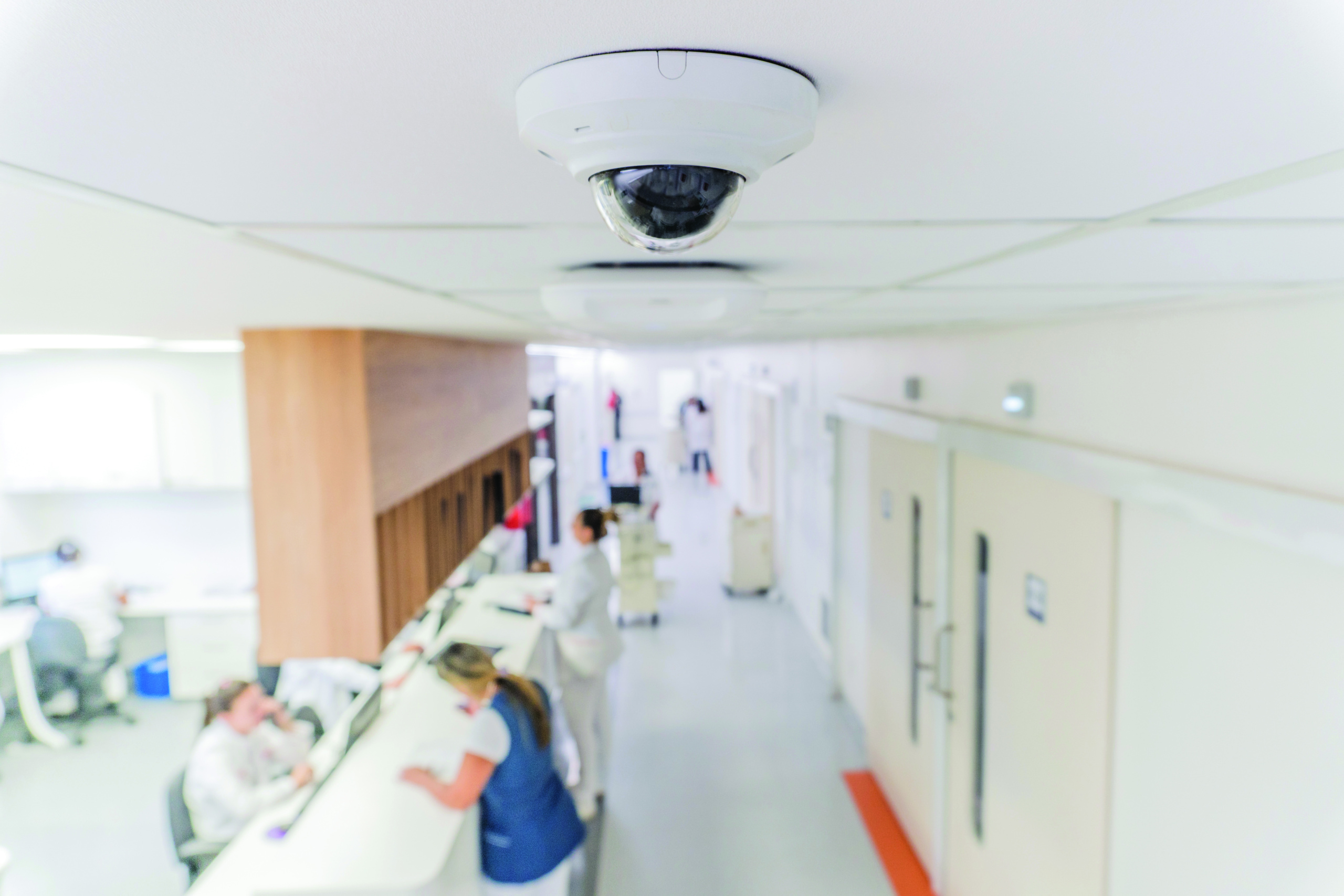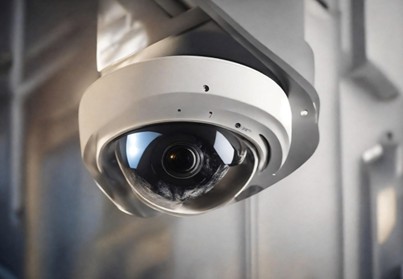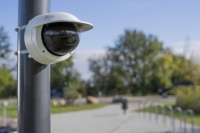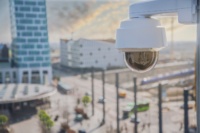Balancing Patient Privacy with Facility Security: Best Practices for Healthcare Access Control
August 5, 2025

Hospitals walk a tightrope. On one hand, they must protect patient privacy, dignity, and sensitive health data. On the other hand, they must ensure the physical security of patients, staff, and assets – these two goals often collide. A single unauthorized entry, such as a tailgater slipping in behind a badge-holder, can expose medical records or endanger vulnerable patients. Over 90% of organizations reported an access control failure within the past six months, with tailgating being the most common issue. For healthcare leaders, the consequences are clear. Poor access control strategies can erode trust, violate federal law, increase liability, and disrupt critical care. Balancing safety with privacy is not just a good practice. It is essential to delivering secure, compliant, and compassionate care.
The High Stakes of Healthcare Access Control
Healthcare access control involves more than locked doors. It safeguards lives, information, and institutional trust. Unauthorized access can result in HIPAA violations, data breaches, patient elopement, or physical harm. For example, a former employee entering a pediatric unit or a confused patient wandering away unnoticed are both serious events. These situations often lead to full investigations, regulatory scrutiny, and potential litigation.
HIPAA’s Security Rule mandates healthcare providers to “limit physical access to facilities while ensuring that properly authorized access is allowed”. The HITECH Act enforces this further with penalties up to $1.5 million per violation in cases of willful neglect.
The damage often goes beyond financial or legal consequences. Security breaches diminish a hospital’s credibility. Patients expect discretion. If security systems are weak or inconsistently enforced, their confidence can be shaken. Access control also plays a crucial role during emergencies. If first responders are delayed at secure entrances or if staff cannot override doors during a crisis, lives may be lost. NFPA 101 clearly states that “security does not take precedence over life safety”. Effective access control should enable rapid egress, allow immediate access for emergency responders, and protect patients without disrupting care.
Regulatory Frameworks That Define the Rules
Hospitals must ensure that their access control strategies align with several important standards and regulations. At the foundation of these requirements is HIPAA, which mandates policies that restrict access to areas where electronic protected health information (ePHI) is stored. This includes charting stations, server rooms, and records storage. Supporting this further, the HITECH Act heightened enforcement by requiring timely breach notifications and imposing steep penalties.
In addition to federal law, accreditation standards shape how access must be managed across healthcare environments. The Joint Commission, for example, expects strict protocols. Standard EC.02.01.01 requires healthcare organizations to identify all individuals entering the facility and to control access to sensitive areas. You can find this standard here: https://www.jointcommission.org/en-us/knowledge-library/support-center/standards-interpretation/standards-faqs/000001223
Additionally, EC.01.01.01 EP5 mandates a documented Security Management Plan based on a facility-wide risk assessment. These standards tend to apply more strictly to certain departments. For example, newborn nurseries and behavioral health units are expected to have heightened protections compared to general medical units.
Beyond privacy requirements and accreditation, physical life safety codes also influence how access control must be deployed. NFPA 101 permits the use of locked doors for security purposes, but only if they automatically release in the event of a fire or emergency and must be properly marked with signage. This ensures that safety is never compromised in a critical moment.
Finally, OSHA’s General Duty Clause adds another layer of responsibility. It requires employers to provide a workplace free from recognized hazards. This includes threats to physical security, making access control a required component of broader safety planning. To ensure full compliance with these overlapping mandates, security leaders should coordinate with the local Authority Having Jurisdiction (AHJ) to confirm that system design meets applicable fire and safety codes.
Best Practices for a Balanced Access Control Strategy
To maintain both safety and privacy, healthcare organizations should implement the following strategies.

Strict ID Badging and Verification Enforcement
All personnel, including staff, contractors, and students, must wear clearly visible photo ID badges at all times. These badges should display the person’s name, role, and department to ensure clarity in identification. The Joint Commission requires organizations to identify all entrants and verify their access needs. Tailgating remains one of the most significant vulnerabilities in healthcare security, cited by 61% of professionals. To mitigate this risk, badge-only entry points should be implemented alongside tailgating sensors and clearly visible signage. However, technology alone is not enough. Human vigilance is just as critical. Staff should feel empowered and encouraged to speak up and ask questions, such as “Can I help you?” when encountering someone without a visible badge.
Leveraging Role-Based Access Control
This ensures that staff can only enter areas relevant to their responsibilities. For instance, a maternity nurse should not have access to the pharmacy, just as an IT specialist should not enter the ICU. Administrators must regularly conduct access audits to identify outdated or inappropriate access rights and deactivate credentials for former employees, vendors, or staff who have transitioned to different roles. By strictly limiting each person’s access to only what is essential for their job, hospitals significantly reduce the risk of internal threats and unintentional privacy breaches.
Securing High-risk Areas Beyond the Basic Badge Swipe.
Zones like pharmacies and medical storage rooms must incorporate multi-factor authentication, access logs, and surveillance cameras to ensure that only authorized individuals can enter. According to DEA regulations, facilities must implement “effective controls” to prevent the theft and diversion of drugs. IT closets and data centers, which store sensitive digital health records and infrastructure, may require biometric authentication to prevent badge-sharing or identity spoofing. Newborn units and behavioral health floors demand even greater safeguards. These might include intercom entry systems, infant tracking technology, duress alarms, and systems capable of initiating an automatic lockdown when a threat is detected. Investing in these technologies demonstrates a strong commitment to safety for both regulators and patient families.
Preventing Patient Elopement
Individuals with dementia, psychiatric disorders, or developmental disabilities are especially vulnerable to leaving the facility without detection. A successful elopement can result in injury, death, or legal consequences. Even near misses often require internal investigations and operational changes. Hospitals can mitigate these risks by deploying delayed-egress locking mechanisms on exit doors within memory care or psychiatric units. These systems delay door openings for a brief period, often 15 seconds, and trigger alarms to alert staff. High-risk patients can also be outfitted with tracking wristbands that interact with the facility’s monitoring systems. Visual indicators, such as specific colored socks or wristbands, help staff quickly identify individuals who require extra supervision. Regular elopement drills should be conducted to prepare staff to respond effectively. Compliance with NFPA 101 is essential to ensure that all exit systems release automatically in the event of a fire alarm or emergency. A layered, multifaceted approach is crucial for effective elopement prevention.
Implement a Strong Yet Welcoming Visitor Management System
Hospitals must know who is in the building at all times and the reason for their visit. Today’s visitor systems can scan government-issued identification, print photo badges with expiration times, and assign specific access permissions depending on the visitor type. These systems also compare visitors against internal or external watchlists to flag individuals who may pose a risk. In some facilities, visitor badges are designed to change color after 24 hours to discourage reuse. Others include RFID tracking features to monitor guest movement and issue alerts if someone enters a restricted area. Despite the availability of these tools, nearly 40% of hospitals still rely on paper logs, which leave critical gaps in accountability and situational awareness. A modern visitor management platform adds a significant layer of security and provides an audit trail for investigators if an incident occurs.
Reviewing Audit Logs and Performing Drills
Every access control system generates valuable data that can reveal suspicious behavior. Security personnel should regularly analyze badge activity, denied entries, and unusual access patterns, especially during off-hours or in high-risk zones. Routine badge audits can verify that all active credentials correspond to current personnel. In addition, hospitals should conduct drills to assess staff readiness for various scenarios. These might include mock tailgating attempts to gauge whether employees speak up, simulated lockdowns to test emergency protocols, or unannounced visitor challenges to verify response procedures. Unlike traditional key-based systems, modern electronic access control platforms can initiate full or partial lockdowns instantly. However, this feature is only effective if staff are properly trained and confident in using the system under stress.
Modern Technologies Reshaping Access Control
Advancements in technology are reshaping how hospitals approach physical security, providing tools that are smarter, faster, and more reliable than ever before.
One of the most impactful developments is the use of mobile credentials and biometric authentication. These tools not only enhance security but also improve convenience and hygiene. Mobile credentials, which allow staff to access secure areas using their smartphones, are encrypted and harder to clone than traditional badges. They can also be deactivated remotely if a device is lost or stolen. Biometric authentication, including fingerprint and facial recognition, adds another layer of security by ensuring that the person entering a secure area is actually the person authorized. More than 50% of organizations have adopted mobile credentials or biometric technology to strengthen their access control systems.
Real-time monitoring and intelligent alerts are also transforming facility security. Modern access control platforms can detect events such as forced entry, doors held open too long, or multiple unauthorized attempts to access a restricted area. These alerts are often tied to integrated video surveillance systems, allowing security teams to view live footage and respond immediately. Many of these platforms also use artificial intelligence to identify patterns that suggest suspicious behavior, such as repeated access attempts at odd hours or irregular movement between zones.
Unified dashboards bring all security components into one command center. These platforms allow administrators to monitor video surveillance, badge access, intrusion detection, and intercom systems simultaneously. Providers such as Genetec, Lenel S2, Siemens offer interfaces that support real-time control, instant credential revocation, and the generation of compliance reports with just a few clicks.
Integration with clinical and life safety systems is another major leap forward. Access control systems can be connected to nurse call systems, logging when and where staff respond to patient needs. Infant abduction alert systems can trigger stairwell lockdowns. Wander management systems can interact with door controls to prevent elopement. Fire alarms can trigger automatic door release and generate audit logs to verify code compliance during emergencies. These connections streamline response, reduce manual actions, and provide reliable records for quality assurance and audits.
Visitor screening tools have also evolved. Many hospitals now use self-service kiosks with multilingual options to ease check-in. Visitors can pre-register and scan QR codes to speed entry. These systems print photo badges linked to individual permissions and send real-time alerts if a guest enters a prohibited area. The result is a more efficient, secure, and respectful experience for visitors and staff alike.
Conclusion: Privacy and Security Are Interdependent
Privacy and security cannot exist in isolation. A hospital that protects data but fails to secure its doors is not truly safe. Conversely, a facility that imposes excessive lockdowns can unintentionally hinder patient care. The most effective access control strategies are rooted in regulatory compliance and adapted to the specific risks and workflows of the facility. These strategies must be backed by thorough training, regular audits, and flexible technology. They must support daily clinical operations while standing ready for crisis scenarios. When done right, access control protects more than just spaces. It safeguards patient dignity, fosters staff confidence, and reinforces public trust.
Is your healthcare facility confidently balancing patient privacy with security?
The truth is weaknesses in access control may not be apparent until an incident occurs. Digital Provisions is here to help you take a proactive stance. As a leading security integration firm serving Long Island and the Tri-State area, we specialize in designing tailored healthcare access control solutions that fortify security while preserving the open, caring atmosphere your patients expect. Our experts can assess your current system, identify vulnerabilities (from outdated locks to workflow gaps), and recommend a custom, future-proof strategy – whether it’s modernizing to mobile credentials, integrating nurse call alarms, or automating audit trails for compliance. Schedule a consultation with Digital Provisions today to strengthen your hospital’s access control posture. We’ll work with you in a consultative approach to ensure patient privacy remains sacred and facility security remains uncompromised. With the right partner and plan, you can protect what matters most – your patients, your people, and your peace of mind – all while meeting every standard with confidence.





